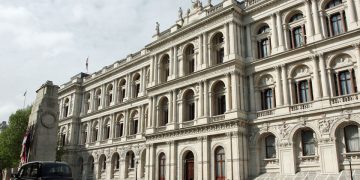On Monday, Indian newspapers splashed a striking photograph across their front pages: a group of Indian female journalists seated prominently in the front row during a press conference addressed by Amir Khan Muttaqi, Afghanistan’s Foreign Minister under the Taliban government.
At first glance, it seemed like an ordinary press meet — yet to many, that single image spoke volumes. It marked a symbolic moment of defiance and change, coming just two days after female journalists were barred from attending a similar Taliban-led press conference in the same city.
The contrast between exclusion and inclusion captured national attention, igniting debates about gender, press freedom, diplomacy, and power.
From Exclusion to Inclusion: The Background
On October 10, 2025, Amir Khan Muttaqi visited the Afghan Embassy in New Delhi following bilateral discussions with India’s External Affairs Minister, S. Jaishankar.
When journalists arrived for the ensuing press conference, something was glaringly absent — women. The entire room was filled with male reporters, and photos from the event quickly went viral, showing an all-male audience before the Taliban minister.
The absence of female representation raised immediate questions. Who made the guest list? Was it the Taliban delegation or Indian officials? And, more importantly, how could such exclusion occur on Indian soil, a democracy that prides itself on equality and a free press?
The Outcry Across India
Outrage was swift and widespread. The Editors Guild of India, the Indian Women’s Press Corps (IWPC), opposition leaders, and countless journalists condemned the act as a violation of India’s values. Social media erupted with criticism, accusing both the Taliban and the Indian government of enabling gender discrimination.
Female reporters noted they had been cleared to attend and held official press credentials. Many asked why their names were omitted from the invite list. “It’s one thing for the Taliban to restrict women in Kabul, but to do so in New Delhi is unacceptable,” said one senior journalist.
For India, which constitutionally guarantees equality, the optics were damaging. Allowing a visiting delegation to apply restrictive norms challenged the nation’s democratic ethos. The incident became not only a diplomatic controversy but a moral one.
Damage Control: The Second Press Conference
Two days later, on October 12, Amir Khan Muttaqi held another press conference in Delhi. This time, female journalists were not only invited but given front-row seats.
The image of women journalists facing the Taliban minister — microphones ready, notepads open — dominated newspapers and social feeds. For many, it symbolized the triumph of public pressure and journalistic solidarity over exclusion and silence.
Muttaqi attempted to downplay the earlier backlash, describing the absence of women as a “technical oversight” resulting from “short-notice arrangements.” He denied that the Taliban intended to discriminate.
However, skepticism lingered. Critics pointed out that the Taliban’s long-standing restrictions on women in Afghanistan — banning them from schools, workplaces, and media — made it difficult to believe that the exclusion was accidental.
India’s Ministry of External Affairs (MEA) swiftly distanced itself from the first event, asserting that the Afghan delegation had organized the gathering independently. The MEA reiterated that India “remains committed to democratic values and freedom of the press.”
Why the Photograph Resonated
The viral image carried multiple layers of meaning beyond the optics of inclusion.
- Accountability in Real Time
The quick turnaround from exclusion to inclusion underscored how media outrage and public scrutiny can pressure even ideologically rigid actors to reverse decisions. The Taliban’s pivot showed the power of collective accountability. - Reasserting India’s Values
India’s constitution protects freedom of the press and gender equality. The second press conference, with women front and center, reaffirmed those ideals after a brief but embarrassing lapse. - Taliban’s Global Image Management
The Taliban government, under international pressure to soften its image, likely saw the backlash as a reputational risk. The inclusion of women journalists served as a temporary attempt to show flexibility, even as its domestic record remains repressive. - Media Solidarity and Gender Empowerment
The united stand of India’s journalists — male and female alike — demonstrated solidarity in defense of press freedom. Their collective insistence on participation proved that professional integrity can overcome intimidation and diplomatic politics.
Lingering Doubts and Criticisms
Despite the apparent course correction, many remain doubtful that real change is underway.
Muttaqi’s explanation of “technical error” was widely dismissed as hollow. Commentators pointed out that in Afghanistan, women are routinely excluded from public life — banned from universities, restricted from travel without male guardians, and often invisible in media.
Critics also questioned India’s response. Why did the MEA not intervene earlier? Could the government have insisted that all credentialed journalists, regardless of gender, be allowed entry? For a nation that projects itself as a global advocate for women’s rights, the incident was a test — one that some feel India only partially passed.
Broader Implications
This episode offers a revealing glimpse into the complexities of modern diplomacy, where values, realpolitik, and public opinion intersect.
India, seeking to maintain stability in its neighborhood, has cautiously opened channels with the Taliban since their return to power in 2021. Yet such engagement carries risk. Every handshake or press event becomes a balancing act — between strategic necessity and moral principle.
For journalists, the episode reinforced that press freedom is never guaranteed — even in democracies. Access, representation, and equality must be defended constantly, especially when international diplomacy brings in actors with deeply conservative ideologies.
For the Taliban, the incident may have provided a temporary public-relations boost. But it also reminded the world how fragile their credibility remains when their domestic policies contradict their diplomatic gestures.
What Comes Next
Observers are watching for signals of whether this inclusion will become the norm or merely a one-time concession. Key questions include:
- Will future Taliban-led events in India or abroad allow female journalists without external pressure?
- Will the Taliban revise internal diplomatic protocols to include women in public events?
- Will India establish guidelines ensuring that visiting delegations respect its equality and media standards?
- Will international media bodies use this episode to push harder on global women’s rights issues linked to Afghanistan?
Conclusion: The Power of an Image
In the end, the photo of Indian women journalists sitting before a Taliban minister represents far more than a news moment. It is a symbol of resilience — a reminder that resistance, visibility, and solidarity still matter in shaping narratives of power.
The image challenges assumptions about silence and submission, showing instead that dignity and determination can shift the balance, even if only for a day.
Whether it sparks lasting change or fades into memory will depend on what follows — if inclusion becomes habit rather than exception, and if the principles of equality and press freedom can withstand both diplomacy and dogma.
For now, at least, one photograph has indeed spoken a thousand words — words of courage, persistence, and the continuing fight for women’s rightful place in every room where power sits.












